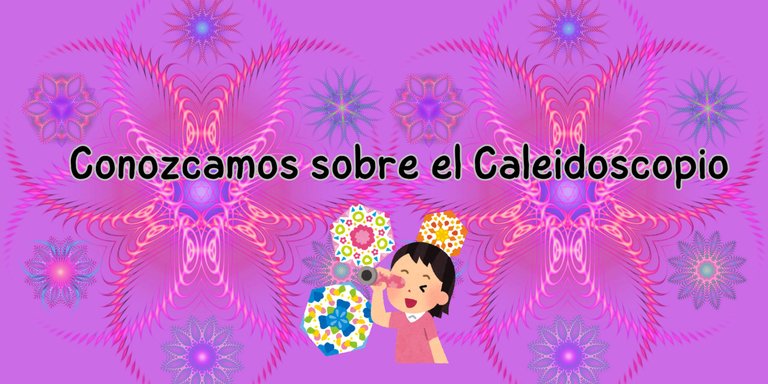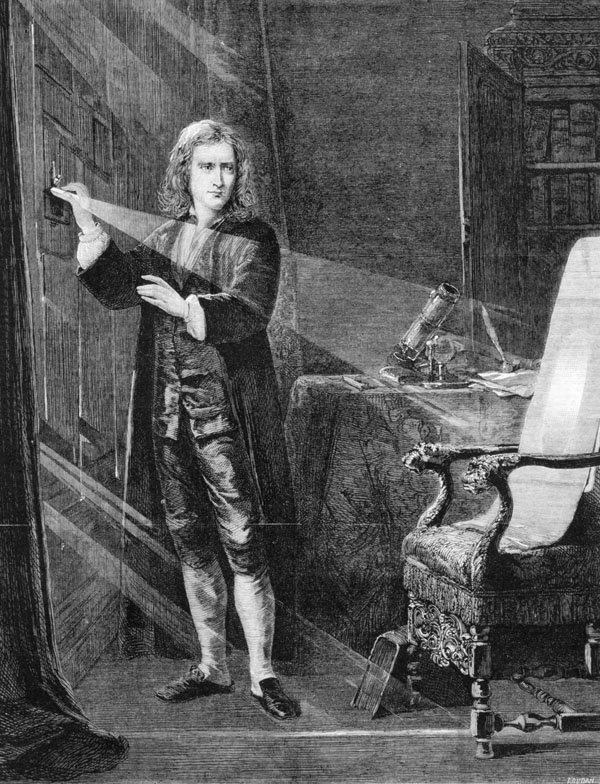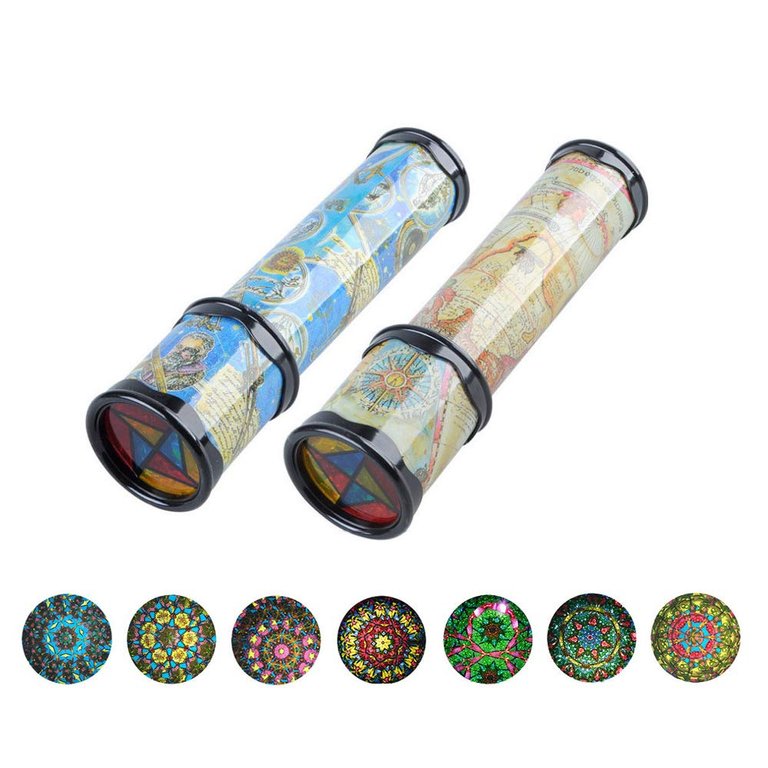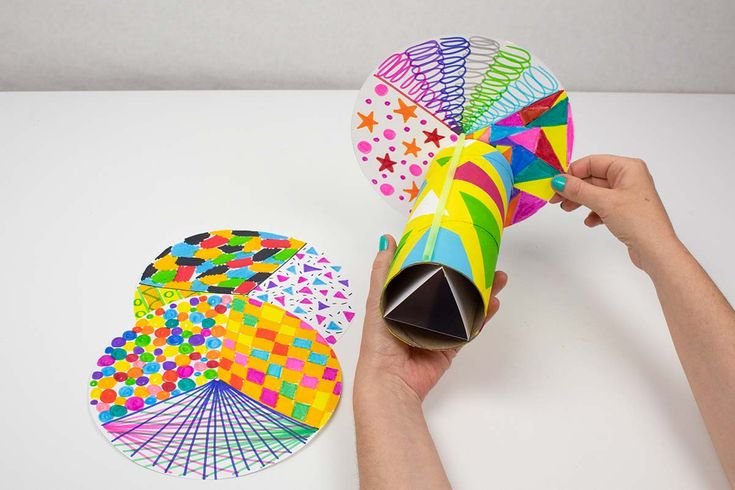Conozcamos sobre el Caleidoscopio // Let's learn about the Kaleidoscope
Hello dear hive community! 😉
¡Hola querida comunidad de hive! 😉
Después de hace varias semanas de ausencia por esta comunidad, hoy quiero compartir con ustedes una publicación bastante interesante, se trata de conocer que es un caleidoscopio, un poco de su historia y para que se utiliza.
After several weeks of absence from this community, today I want to share with you a very interesting publication, it is about knowing what a kaleidoscope is, a little of its history and what it is used for.

Imagen realizada con la página web de diseño gráfico y composición de imágenes Canva // Image made with the graphic design and image composition website Canva.
Sin embargo, antes de comenzar a hablar acerca del caleidoscopio es importante conocer un poco sobre la óptica. Esta rama de la física es la que se encarga de estudiar el origen y el comportamiento de la luz así como también sus diversas propiedades. Ampliando un poco dicho concepto y partiendo un poco de la historia, es importante acotar que la luz ha sido objeto de estudio desde los tiempos más antiguos, es decir, antes de Cristo.
Los primeros estudios fueron enfocados hacia la estructura de los lentes y esto ocurrió en el antiguo Egipcio, como fue el lente de Nirmud justo 700 años A.C el cual fue construido en Asria. No obstante, mis amigos los griegos también se interesaron por comprender la naturaleza de la luz, quienes la estudiaron en base a dos perspectivas: 1) Su recepción o visión, 2) Su emisión.Ellos pensaban que los objetos emitían copias de sí mismos mediante la luz, y fueron filósofos como Platón, Demócrito y Aristóteles quienes realizaron estudios profundos sobre la óptica.
However, before we start talking about the kaleidoscope, it is important to know a little about optics. This branch of physics is in charge of studying the origin and behavior of light as well as its various properties. Expanding a little on this concept and starting from history, it is important to note that light has been the subject of study since ancient times, that is, before Christ.
The first studies were focused on the structure of lenses and this occurred in ancient Egypt, as was the lens of Nirmud just 700 years BC which was built in Asria. However, my friends the Greeks were also interested in understanding the nature of light, who studied it based on two perspectives: 1) Its reception or vision, 2) Its emission, they thought that objects emitted copies of themselves through light, and it was philosophers such as Plato, Democritus and Aristotle who made profound studies on optics.
 Source
SourcePero, dentro de la óptica hay diferentes vertientes y una de ellas es la óptica geométrica, la cual se origina de la aplicación de la geometría en fenómenos como refracción y reflexión, las cuales fueron estudiadas por Willebrord Snel van Royen (1580-1626), el científico holandés conocido como Snell. Básicamente parte de la presencia de un rayo luminoso, cuyo comportamiento se describe a través de las reglas de la geometría para poder determinar las fórmulas correctas para lentes, espejos y dioptrios. Con ayuda de la óptica geométrica hoy en día podemos estudiar fenómenos como arcoíris, la propagación de la luz y los prismas.
Ahora bien, ¿Qué es un Caleidoscopio? Según Pérez y Merino (2024) un caleidoscopio “es un tubo que cuenta en su interior con varios espejos, los cuales se encuentran inclinados. En uno de los extremos del caleidoscopio hay dos láminas de vidrio: entre ellas, diferentes objetos irregulares y de distintos colores. Al voltear el tubo y observar por el extremo opuesto, las imágenes de estos objetos comprendidos entre las láminas de vidrio se multiplican de modo simétrico”.
But, within optics there are different aspects and one of them is geometrical optics, which originates from the application of geometry in phenomena such as refraction and reflection, which were studied by Willebrord Snel van Royen (1580-1626), the Dutch scientist known as Snell. It basically starts from the presence of a light ray, whose behavior is described by the rules of geometry in order to determine the correct formulas for lenses, mirrors and diopters. With the help of geometrical optics we can nowadays study phenomena such as rainbows, light propagation and prisms.
Now, what is a Kaleidoscope? According to Perez and Merino (2024) a kaleidoscope “is a tube with several mirrors inside, which are inclined. At one end of the kaleidoscope there are two sheets of glass: between them, different irregular objects of different colors. When the tube is turned over and observed at the opposite end, the images of these objects between the sheets of glass multiply symmetrically”.

Source
Un caleidoscopio es básicamente un tubo en cuyo interior está lleno de elementos, como retazos de vidrios u otros objetos de colores, dentro de él hay espejos los cuales tienen el propósito de reflejar hacia todos los lados lo que se encuentra exactamente en medio de él. De este modo se puede crear una vista homogénea y reproducida en varias ocasiones del hermoso caos que hay en el interior de dicho aparato.
En el fondo justo del lado opuesto del observador se encuentran todos aquellos elementos que formarán lo que luego vamos a ver. Sin embargo, pensemos que tenemos en nuestras manos un caleidoscopio de tres espejos, por lo que la base será triangular, el reflejo estará encerrado por estos tres espejos quienes serán los encargados de reproducir de manera infinita lo que está en el centro del mismo. Cuando miramos por el visor, lograremos observar una figura reproducida cientos de veces por estos tres espejos que se reflejan unos a los otros creando una visión infinita de un espejo dentro de otro espejo. Es importante saber, que la distancia en grados que haya entre los espejos crea diferentes reproducciones; cuando los espejos se encuentran ubicados 45° uno del otro se crearán ocho imágenes iguales, cuando están a 60° se hacen seis y cuando están a 90° se verán cuatro.
A kaleidoscope is basically a tube inside which is filled with elements, such as pieces of glass or other colored objects, inside it there are mirrors which have the purpose of reflecting to all sides what is exactly in the middle of it. In this way it is possible to create a homogeneous and repeatedly reproduced view of the beautiful chaos inside the apparatus.
In the background, just on the opposite side of the observer are all those elements that will form what we are going to see later. However, let's think that we have in our hands a three-mirror kaleidoscope, so the base will be triangular, the reflection will be enclosed by these three mirrors which will be responsible for reproducing infinitely what is in the center of it. When we look through the viewfinder, we will be able to observe a figure reproduced hundreds of times by these three mirrors that reflect each other creating an infinite vision of a mirror inside another mirror. It is important to know that the distance in degrees between the mirrors creates different reproductions; when the mirrors are located 45° from each other, eight equal images will be created, when they are at 60°, six will be created and when they are at 90°, four will be seen.

Source
Como podemos ver un caleidoscopio está muy lejos de ser algo extremadamente complejo, es mucho más sencillo de lo que podemos imaginar y con él podemos observar conceptos sencillos como reflexión y refracción de la luz.
As we can see a kaleidoscope is far from being something extremely complex, it is much simpler than we can imagine and with it we can observe simple concepts such as reflection and refraction of light.
Ya para despedirme espero que el tema sea del agrado de los lectores y deseo ver en los comentarios sus opiniones y aportes significativos que ayuden a la ampliación del tema y que genere un debate crítico y enriquecedor para la satisfactoria divulgación del conocimiento científico
In closing, I hope that the topic is to the readers' liking and I hope to see in the comments your opinions and significant contributions that will help to broaden the topic and generate a critical and enriching debate for the satisfactory dissemination of scientific knowledge.
Referencias
Serway, R; Jewett J. (2005). Física para Ciencias e Ingeniería. Editorial Thomson: México.
Pérez J, Merino M. (2024). Caleidoscopio - Què es, definición, características y usos. Disponible en
References
Serway, R; Jewett J. (2005). Physics for Science and Engineering. Editorial Thomson: México.
Pérez J, Merino M. (2024). Kaleidoscope - What it is, definition, characteristics and uses. Available in
Translator Deepl


Posted Using INLEO
https://x.com/ILovePhysica/status/1900346947124264969?t=AQPW0bBC6P1KDkt2RRwMxg&s=19
Thanks for your contribution to the STEMsocial community. Feel free to join us on discord to get to know the rest of us!
Please consider delegating to the @stemsocial account (85% of the curation rewards are returned).
You may also include @stemsocial as a beneficiary of the rewards of this post to get a stronger support.